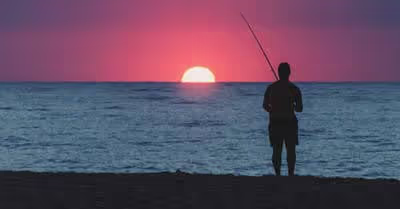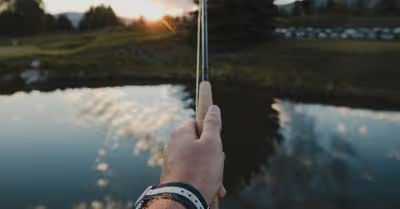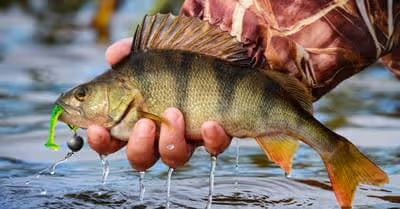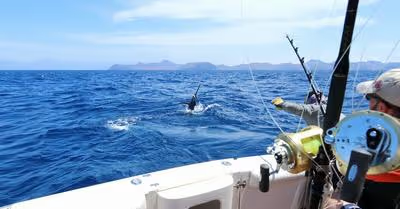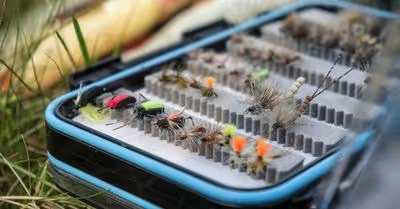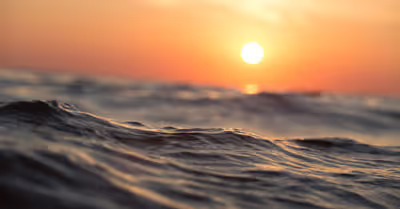Table of Contents
How does drone fishing work?
Before there was drone fishing, there was balloon fishing and kite fishing. Normally, without using a drone or a balloon, you might drop your line and then boat some distance away from it. If you use a balloon, you can keep the boat in the same spot and get your line a long way away from the boat.
With a drone, it is easier to get your line where you want it. You can use a drone to carry your bait and hook hundreds of feet away from your boat, as long as your line is long enough. If you use a drone to deliver your bait, you won't spook the fish with your boat.
Is drone fishing expensive?
Yes and no. While fishing drones are not very cheap for everyone, they do not cost a fortune, especially not at the lower end of the scale. You can get fishing drones for a few hundred dollars, plus there is a market for more expensive drones that cost at most a few thousand dollars. Fishing drones sell for around $300 to around $3000.
Are expensive fishing drones worth the money?
You can find good fishing drones that cost less than $1000, but it may be harder to find good ones for less than $500. Cheaper drones may work properly, but they do have their limitations.
One important feature for a drone to have is a long-lasting battery. If you buy a cheaper drone with a battery that doesn't last long, you might lose it in the water - or it could merely be a hassle to fish with it. A weak battery can take a lot of the fun out of drone fishing.
A cheap drone may also be able to lift only a very little weight, so little that you cannot fish with it correctly. Better drones are also smart and can automatically avoid crashing into the water if you make mistakes.
Your drone should also have a reasonably long range, which a cheaper drone might not. Better drones are more forgiving of any mistakes you make.
If you have a high end or medium-end drone, you can command it to return to the controller. This may save you in a situation where you are worried about losing the drone. A low-end drone might not be able to fly back to you automatically.
Are fishing drones only for fishing?
Many fishing drones are both suitable for fishing and suitable for general purposes. A fishing drone may still allow you to take high-quality pictures and video, explore, deliver packages, and anything else you might do with a drone. Cheaper drones may have more limited capabilities, both for catching fish and for other purposes.
Can you fish without a dedicated fishing drone?
Yes, you can buy accessories for ordinary drones that allow you to fish with them. You can buy either an electronic payload release, which will release the bait when you press a button or a mechanical payload release, which will open only after a fish pulls on your line.
Are fishing drones waterproof?
While pricier dedicated fishing drones are, cheaper drones are not. Therefore, you could lose a cheaper drone if you are not careful.
There is a reasonable possibility of losing a non-waterproof drone while fishing. If your line gets tangled on the drone, it may not release. If a fish bites the bait before you release it, or if the line is tangled, the fish may pull your drone into the water.
Be careful what payload release mechanism you are using. If you use a payload release mechanism that is not safe, a big fish might be able to pull your drone down into the water. An unsafe release mechanism on a non-waterproof drone can end badly.
Electronic and mechanical payload release mechanisms
With a mechanical release mechanism, the fish will bite your hook while the line is still attached to the drone. When the fish bites, the payload release device will open, and you will be able to reel the fish in with your fishing rod.
With an electronic release system, you have to press a button to release the line. You are supposed to release the line before a fish bites it.
Mechanical release mechanisms are safer than electronic release mechanisms because they will open up when the line is pulled on, so your drone won't be dragged into the water. With an electronic release system, a fish might bite your line before you manually release it. A big fish could drag your drone down.
A mechanical release mechanism will open if the tension exceeds a certain limit. This is much more foolproof than an electronic mechanism.
Some mechanical release mechanisms allow you to adjust the maximum tension yourself. This is risky as you can set the maximum tension too high. Be on the safe side - don't set the tension too high if you can adjust it.
Always repair a drone as soon as it needs repairs
Making small repairs now can save you from bigger and more expensive repairs in the future. If you don't fix a minor problem with your drone, it might lead to a bigger problem that is harder to fix or bad enough that you have to replace your drone.
For example, you might not replace a propeller that is a little bit damaged right away. You might get away with neglecting to repair your propellers in the short run, but your drone might drop out of the sky and break if you leave it too long.
You should have a collection of spare parts, even if your collection is very basic. Even if your spare parts are only propellers and batteries, a spare parts collection can help you. If you have the parts, you can fix your drone right away and not on another day.
Pay attention to your drone's battery levels when fishing
One of the easiest ways to lose a drone is to let it run out of batteries. Don't push your luck with battery life; that can be an expensive mistake.
When you are fishing, your drone may lose power faster than normal. It has to carry the weight of your bait, line, and hook. This extra weight can make more than a small difference.
It would help if you kept a few spare batteries with you when you go fishing with a drone. Drone batteries don't usually last very long, not even if they are somewhat longer lasting than average. Bring a few spare batteries, and you can fish for as long as you want.
How much of an advantage is it to have a dedicated fishing drone?
If you can afford them, dedicated fishing drones are better than payload release mechanisms that you add on to ordinary drones. A good fishing drone is not only waterproof and capable of floating on water but can take off from water also. While dedicated fishing drones are relatively expensive, the good ones are not easy to wreck.
Since fishing drones are waterproof, they tend to use an electronic rather than a mechanical payload release. This is an advantage because you can drop your bait wherever you want with an electronic release.
Dedicated fishing drones tend to be good drones in general. Their cameras, for example, are usually of high quality.
Does anyone still go drone fishing with improvised release mechanisms?
Not very many people do, but you can try it if you want. It is risky for your drone, but some people try it anyway.
Merely fashioning a hook out of a coat hanger and tying your line to it might work. After a fish catches your lie, turn your drone around and fly backward to release the line.
This is risky - the line might not come loose, and many fish can pull a lot harder than your drone. Some people improvise other homemade mechanisms, but they are all risky and will not drop your bait exactly where you want it.
Do you always need a fishing rod when you fish with a drone?
Usually, you will use a fishing rod. You use the drone to get the bait to where you want it, and then you reel it in with the rod. However, there are many different ways of fishing with a drone, and it is possible to do it without a fishing rod.
Drone fishing without a rod is just as risky as using improvised release mechanisms. Lots of people lose their drones to the sea, and you should not try this unless you can stand to lose your drone.
To do drone fishing without a fishing rod, you use the drone to pull the fish out of the water. Attach your fishing line to the drone securely, fly your drone to where you want it, and lower the bait into the water.
While this can be fun and can work, it has its disadvantages. A lure that is being pulled around by a drone will not move naturally, so the fish might not bite it.
If a fish is stronger than your drone, it will pull it into the water. Your line can also get caught on something, and then it may be hard to get your drone back before it runs out of power and sinks.
Despite all the disadvantages - I do not recommend this technique - you can catch fish this way. Drone fishing without a fishing rod is less hazardous in freshwater because you won't usually catch fish that will fight as hard. It is risky whether you are in freshwater or not, but freshwater is less dangerous.
Practice flying a drone before you fish with it
Have some experience flying drones before you try drone fishing. The more experience you have, the less likely you are to make a mistake. This does not have to take very long - you can learn to fly a drone well quickly.
Scout fish locations first
You can use a drone to find fish as well as to catch them. Before you even attach your line and bait, you might do some scouting. With a high-resolution camera, you can find spots where fish are likely to be and avoid potential snags.
Don't fly too close to the water
If you go near to the water, the fish can hear your drone and will get spooked. A drone is quiet compared to a boat, but fish can still hear it.
Can you go drone fishing in the wind?
Don't fish if the wind is strong. Light wind might be fine, depending on your drone.
Your battery will drain a lot faster if your drone has to fight against the wind. Know what your drone can handle.
Are ordinary fishing rods good enough for drone fishing?
Yes, you can often use the same fishing line, hooks, and fishing rods that you already use when drone fishing. Keep in mind that you are going to be reeling fish in from farther than normal distances. It would be best if you used a spool that is resistant to jamming.
Recent Articles



